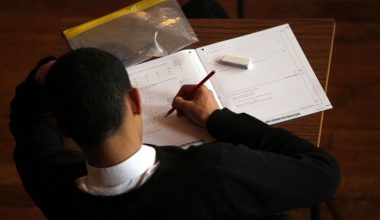When you move from high school to college, there’s a big change in how you learn and the academic structure. One question that comes up when you switch to college is: Do universities have “half term” breaks?
Of course, college is where you can learn more independently and experience new things. There is also a different schedule for classes and breaks compared to school.
However, knowing about college holidays helps students, parents, and teachers to understand the schedule better and take advantage of the special chances that come with higher education.
In this helpful guide, we’ll talk about college holidays, how they’re different from school breaks, and why they’re planned the way they are.
Table of contents
Do Universities Have Half Term?
Universities typically do not have “half term” breaks in the same way that primary and secondary schools do. In primary and secondary education, half term breaks often refer to short breaks that occur halfway through a term or semester. These breaks provide students and teachers with a brief respite before continuing with the remaining portion of the term.
However, in universities, the academic calendar is usually structured differently. Instead of having short breaks in the middle of a term, universities often have longer breaks between semesters or quarters. These breaks can vary in length but are generally longer than the short half term breaks in schools.
University breaks might include:
- Winter Break: This is typically a longer break that falls between the fall and spring semesters. It often includes holidays like Christmas and New Year’s.
- Spring Break: This is a mid-semester break that usually occurs in the spring, giving students a chance to relax before the final push of the academic year.
- Summer Break: This is the longest break, occurring between the end of the spring semester and the start of the fall semester. It often spans several months and provides students with an extended period to travel, rest, work, or engage in other activities.
- Reading Weeks or Study Periods: Some universities incorporate short study breaks or reading weeks within the semester to give students time to catch up on coursework, prepare for exams, or engage in research.
- Easter Break: While not as prevalent as in primary and secondary education, some universities may have a short break around the Easter holiday.
You should consult your university’s academic calendar to understand the breaks and holidays provided by their institution.
See also: How To Use Social Media Wisely For Students | 10 Effective Tips
What are the various factors that influence the scheduling of University holidays?
The scheduling of university holidays is influenced by a variety of factors, ranging from academic considerations to practical and administrative needs. Here are some of the key factors that play a role in determining when universities schedule their breaks:
Academic Calendar Structure
The overall structure of the academic calendar, including the number of terms or semesters in an academic year, impacts the holidays. Different universities may have different calendar structures, affecting the timing and duration of breaks.
Semester Length
The length of each semester or term can influence the timing of breaks. Longer semesters might have more opportunities for breaks, while shorter semesters might have fewer, longer breaks.
Course Load and Intensity
The intensity of coursework and the number of assessments within a semester can impact the need for breaks. Universities might schedule breaks strategically to give students time to rest, catch up on studies, and prepare for exams.
Assessment Periods
Universities often schedule holidays around major assessment periods, such as midterms and final exams. Breaks might be placed before or after these periods to give students adequate time to prepare and recover.
Cultural and Religious Observances
Holidays based on cultural and religious observances can influence scheduling decisions. Universities may consider the diverse backgrounds of their students and aim to accommodate important holidays.
Weather and Climate
In some regions, weather and climate conditions can affect when breaks are scheduled. For example, universities in areas with harsh winters might plan longer breaks during the coldest months.
Faculty Availability
University holidays also consider faculty availability for teaching and research. Breaks might align with times when faculty members are less likely to be engaged in ongoing academic responsibilities.
Read also: 17 Best Places for Students to Travel to for Holidays in 2024
Are university holidays different from high school holidays?
Yes, university holidays can be different from high school holidays. The academic calendar for universities is generally structured differently from that high schools. Here are some key differences:
Duration
University holidays, particularly breaks between semesters, are often longer than those in primary and secondary schools. University students might have several weeks off between semesters, whereas primary and secondary school students might have shorter breaks.
Timing
The timing of holidays can vary between university and primary/secondary school calendars. University holidays might be based on the academic calendar and the needs of college-level courses, while primary and secondary school holidays might align more closely with traditional school-year schedules.
Check out: How Many Hours is Classed as Full-time Education in the UK?
Scheduling
Primary and secondary schools typically have breaks scheduled around traditional holidays such as Christmas, New Year’s, Easter, and summer vacation. University holidays might be more flexible and can vary based on the institution’s specific academic calendar.
Exams and Assignments
University holidays often include time for students to prepare for final exams, complete assignments, and work on research projects. This academic work can extend into the holiday period. In primary and secondary schools, holidays are generally intended as breaks from school-related activities.
Academic Events
Universities might have academic events, conferences, and research activities that continue during holidays. Primary and secondary schools usually don’t have such events during their breaks.
Flexibility
University students often have more control over their schedules, allowing them to take advantage of extended breaks for personal and academic pursuits. Primary and secondary school students typically have a more structured daily routine.
Read also: See also: Public vs. Private College: Which is Better?
Conclusion
The diversity of factors influencing the timing and length of university breaks reflects the complex nature of higher education institutions and the desire to provide students with optimal opportunities for rest, academic success, and personal growth. We hope this guide has been helpful in answering your question of do universities have half term.
Check out: 45+ Ultimate Care Package Ideas For Your Best Friend
FAQs
No, universities generally do not have “half term” breaks in the same way schools do. Instead, they have longer breaks between semesters and quarters.
Common university holidays include winter break, spring break, and summer break. Some universities may also have short study breaks or reading weeks within a semester.
University breaks are often longer to accommodate the need for students to rest, prepare for exams, engage in research, and pursue other academic and personal activities.
University holidays may consider cultural and religious observances, aiming to provide students with time to celebrate important holidays according to their beliefs and backgrounds.
Yes, students can use university breaks to catch up on coursework, study for exams, engage in research, or participate in workshops and internships related to their field of study. Many universities encourage a balanced use of breaks for both academic and personal pursuits.
References
- thinkstudent.co.uk– do universities have half-term
- thestudentroom.co.uk– do universities have half-term
- ucas.com– do universities have half-term
Recommendations
- Best Alternatives Of Getting Around Campus In 2024
- 25+ Fancy Dress Ideas for College Students
- How Do You Rent a Graduation Gown? Best Places to Hire a Graduation Gown
- 17 Best Vacation Rental Sites in 2024 | Explore options
- 15 Best Places For College Students to Travel | 2024 Ranking
- 15 Best Vacation Spots For College Students
- 20 Cheap Vacations For College Students in 2024 | Best Locations





